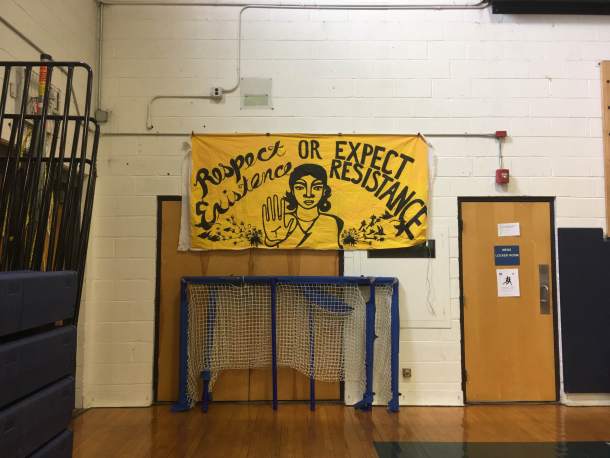
[R]ANDOLPH — About 200 people from across the state gathered at Randolph Union High on Wednesday for a first-of-its-kind event in Vermont.
In many ways, the day looked like any other anti-racism conference. There were panelists, workshops, custom T-shirts to take home and a keynote speaker with a national profile. But the majority of participants, organizers, and many of the speakers were high school students. Some were even in middle school.
The day’s events were organized by students and faculty advisers with the Randolph Union Racial Justice Union and the South Burlington Social Justice Union. Randolph Union also offered a project-based course dedicated to racial justice this year, which gave students and teachers extra time and resources to dedicate to organizing.
The school’s principal, T. Elijah Hawkes, said that when students and teachers came to him with the idea for the conference, he simply “got out of the way.”
“This is exactly what can happen when a school can allocate the resources during the school day for teachers and students to do work in contemporary problem-solving,” he said.
Vermont classrooms, like the rest of the state, are overwhelmingly white: only about 10 percent of students are students of color, according to data from the Vermont Agency of Education. Many participants and organizers said the networking afforded by the conference was important not only to amplify work from across the state, but also to combat the isolation that students of color often feel.
“I want people to know that they’re not in the fight alone against systemic racism or just in their situation at their schools,” said Brandon Ryan, a conference organizer and senior at RU.
In certain ways, the conference aimed to do on the statewide level what racial justice alliances, which have been increasingly popping up in Vermont’s schools, have been doing at the local level.
At Springfield High, the student group AWARE just started this year. Nicole Awwad, a faculty adviser, stressed that the club was both a support group for students of color and a place for white students, too. But the group’s most immediate, tangible impact had been to bring kids of color together to validate one another.
“So many of them hadn’t made the connection to other students having the same experience. And so it’s kind of emboldened them to say ‘I don’t want to deal with this any more.’ And also say ‘I’m not crazy’,” she said.
That’s exactly what Jazmin Rodriguez-Perez, a freshman at Springfield High, said about the group. It gave her a safe space to talk about strange looks she got and the racist comments other students made with people who could relate.
“At first I thought I was being dramatic,” she said. “It made me realize I wasn’t being dramatic. And it’s a huge problem.”
Workshops included sessions on how to talk to white friends about racism, fighting bias within athletics, and introducing ethnic studies courses into the local curriculum. Over lunch in the gym, students talked about raising the Black Lives Matter flag and how to use social media as an effective organizing strategy. Colorful banners hung on the walls: “YOUTH VOICES! Nothing about us without us,” one read. “ABOLISH I.C.E.” read another.

The conference comes at a time when schools in Vermont are increasingly talking about race and education, and much of the activism around the matter has been student-led. Just last week, Burlington middle school students walked out of class to protest racism in school. Students have also successfully lobbied school officials to raise the Black Lives Matter flag in high schools across Vermont, including in Randolph, Hinesburg, Rutland, Montpelier, Brattleboro, and South Burlington.
The Vermont-NEA, the state’s largest teachers union, has identified tackling racism in schools as a key priority, and put together several free online toolkits for students, teachers, and administrators. Representatives from the union were present on Wednesday.
And racial equity in schools was also top of the agenda in Montpelier this year, where lawmakers passed a law tasking a working group with studying how to make the state’s academic standards more inclusive of marginalized communities. H.3 passed both the House and Senate chambers unanimously, and became the first bill to become law this biennium when Gov. Phil Scott signed the measure at a public ceremony at the Statehouse in March.

